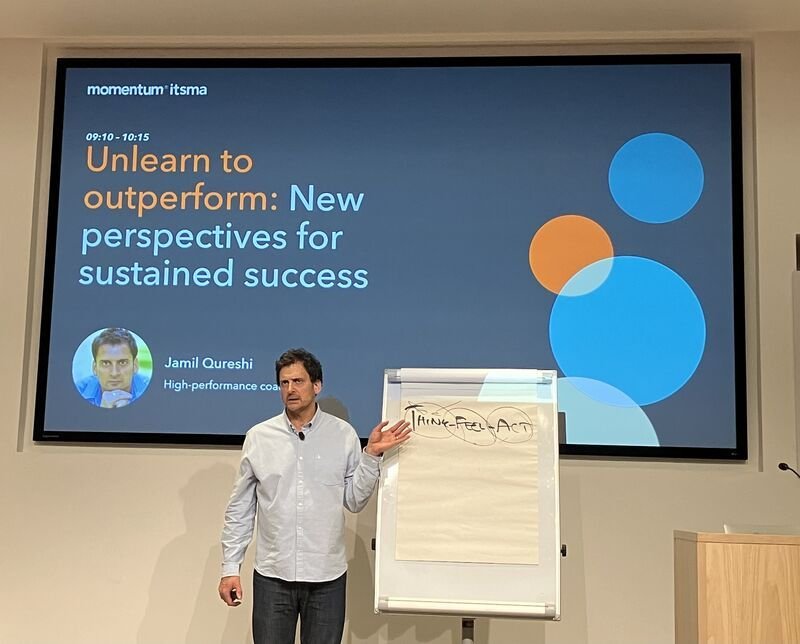If you are leading a team or working in some sort of sales and marketing capacity you are ultimately trying to affect a change in behaviour. We are all outcome driven people (or should be!) and we want our teams to adopt certain behaviours and we want our client’s customers to start taking new actions.
But what if trying to drive those outcomes is the wrong way of approaching things? What if there was a completely different way of creating behaviour change that is more oblique yet more effective? That was one of my main takeaways from Jamil Qureshi's talk on individual and team high performance at our recent Momentum ITSMA London conference.
💡 “You’ll never change how they do it if you don’t change how they view it”
From his experience as a pyschologist working with some of the world’s top sports people, Jamil shared a number of insights into human nature that points to the futility of directly trying to control how people act. Instead he brought to life the way that our motivations to act are driven by our thoughts, beliefs and opinions and in turn our feelings. It’s “Think-Feel-Act” in that order. The implication is that it is much more valuable to invest in changing how people think than trying to control how they act. That means inspring our teams with positive ideas and a vision of the future rather than focusing on directing them how to change things that aren’t working well. It means helping customers with new perspectives and fresh ideas that change their mindset rather than rational persuasion and calls to action. Taking this approach generates real commitment rather than mere compliance in our teams, and increases the mental availablity of brands for our client's customers.
💡 “Learn to dance on a moving carpet rather than just see a rug being pulled from under our feet”
Given the continually changing context we are all faced with there is also tremendous value in this approach. Focusing on getting people to act diffently has the major limitation of not empowering people to adjust to the changing circumstances. After all it is very hard to predict every possible scenario when giving a prescriptive instruction to act and then when inevitably the scenario changes doubts creep in about whether or how to procced. When it comes to customer buying, an inherently complicated and individual process, attempting to get buyers to act with CTAs and form filling often falls flat or generates junk leads. It’s better to equip teams to deal with change with a clear sense of a positive vision, and to understand that “the map is not the territory” so they can explore new routes and new ways to get things done. And it’s better to inspire customers with ideas, visions of the future and memorable brand associations so that relationships and preferences can be developed before any buying process even starts.
Originally posted on LinkedIn July 2024
